
Trade shows offer a wealth of opportunities to get noticed. There's the booth display and messaging; off-the-floor networking events and receptions; the best-of-show award competitions; and press room meet-and-greets; but no opportunity quite speaks of your prestige in the industry like a speaking opportunity.
Call for Speakers
Speaking opportunities generally present themselves in the form of a “call for speakers” or “call for papers” or “abstracts” anywhere six-to-nine months out from a show. This is a general rule of thumb; however, some shows post even closer to a year in advance. Every show references speaking submissions as something different, but regardless of whether it’s called a proposal, a paper, an abstract, an application or otherwise, two things remain firm for all shows: Deadlines and guidelines. Strict compliance to such parameters is paramount to even be considered for the privilege to speak. Decision makers of who speak are predominantly looking for strong topics as much as they are seeking strong speakers. Big companies and corporation often get top billing as a result of public relations considerations despite all efforts to remain object; it’s merely the nature of the beast.
Submissions usually require a bio of the prospective speaker with a specific word count. Again, adherence is essential.
Most trade shows are run by industry associations or publications or sometimes the merging or partnership thereof. Committees are formed representing members of these organizations to vote on the eligible speaking candidates. Once a list of prospective speakers is compiled, the committee votes and whittles the list down to a short one, until ultimately a roster of lucky speakers emerges.
The Key to Keynote Speakers
Keynote speakers are predominantly invited to speak and are often even paid to do so. Typically keynote headliners carry a fair amount of prestige and notoriety. Often famed authors, CEOs, politicians, athletes and subjects of inspirational and against-all-odds survivor stories serve as keynotes. Examples of such individuals who draw huge audiences at trade shows include former U.S. President Bill Clinton; Richard Branson, chairman of Virgin Group; Deepak Chopra; and former Secretary of State Colin Powell. Speakers of this caliber are always commensurate with the prestige of the show itself. A big show requires a big speaker.
Solicited, Unsolicited & Paid Speaking Opportunities
A paid-speaking spot will never carry the weight as an unsolicited (invitation-only) or solicited (submission-required) opportunity due to the often unfavorable stigma associated with paid spots as sales pitches, shameless plugging of one’s product and inexperienced speakers. Whereas the reputation of an unsolicited or solicited speaking session is that of a more educational nature as well as motivational, informative, inciting and, yes, sometimes, even entertaining.
Look Before Leaping (or Speaking)
Tailoring and presenting a speech requires a lot of work and involves a lot of pressure, so be sure to know that there is value in the opportunities in which you're seeking or accepting. A tell-tale sign of a good speaking opportunity is notoriety and widespread familiarity with the association or publication producing the show or, of course, the show itself. Research the track record of the show and even speak to past and upcoming exhibitors to gain a pulse of the energy of the show and its attendees. Also reference the show’s website for past speakers to get an idea of topics and the level of experience they look for when considering speaking submissions.
A good idea is to create a speaking opportunity spreadsheet (SOSS). Include basic facts about the trade show including name of the show, dates, destination, number of attendees, speaking opportunity deadlines; specifying whether they are paid, solicited or unsolicited; the link to the speaking opportunity; and the deadline. Marketing and trade show managers can more easily reference and better weigh their options this way.
Speaker in the House
If your submission is selected, a desirable presenter representing any given company should have obvious qualities of a
strong public speaker. Such attributes include experience, knowledge of the topic, and charisma often comes in handy. As likeable as a presenter may be, an effective speaker is the kind who gets an invitation to return.
Effective trade show speaking and presenting involves three main elements:
- Education — Always teach or reveal something new industry-related to the audience
- Inspiration — Attempt to evoke enthusiasm about the subject at hand
- Information — Don’t forget to include industry-related facts and FAQs
It's imperative that the speaker remains focused on the topic, never attempting to promote or sell a product or service.
Producers frequently conduct and distribute surveys about the speaking sessions. If this cardinal no-plugging rule is violated, a speaker and/or company can be flagged, jeopardizing his or her future chances of presenting at that show.
Keeping It Fresh
A sure-fire way to keep show producers and audiences peaked is to tie the speaking topic to hot headlines or something “trending now.” For instance. if at a marketing or advertising-related show, weaving current events such as social media networking, blue-tooth marketing or QR codes into the topic keeps a presentation fresh and exciting and often helps adhere and fulfill the three key elements to a successful trade show speech — educational, inspirational and informational. Another way to avoid presenting an overly-covered or tired topic is to reference speaking programs and websites from past shows.
Perks of Presenting
Many of the benefits of speaking and presenting at trade shows comes long after the actual session takes place. It's the residual leverage gained through public relations and media exposure where the real payoff occurs. After speaking, your company and its speaker can infinitely be qualified as a presenter and sometimes a repeat presenter at that annual show or exhibition. It's a great addition to any résumé or CV and forever is a feather in one’s cap.
Photo by Stonehouse Photographic. Courtesy of Internet Society.

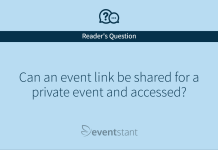
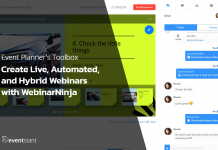
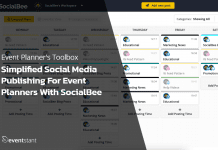

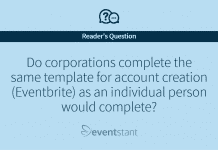



![How Important Are Face to Face Meetings [INFOGRAPHIC]](https://eventstant.com/wp-content/uploads/faceToface_v11-sm-218x150.jpg)


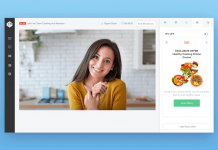







I’m guessing by “paid speaking” you mean spots that speakers pay for, as opposed to ones where they get paid. If speakers aren’t paid, they need to at least be able to sell books, etc.
Thanks for your comment Julie. Yes, that’s the kind of paid speaking opportunity Linda talked about. It’s good experience for speakers without much experience because it reduces the risk for event planners of inviting a speaker audience might not know or like.
But, you’re right, in these situations it’s good to have some sort of options for monetizing that opportunity by selling products or at least getting people to sign up for an emailing list.
Noticed you’re a speaker, we have a project in development for speakers and I think you will find it useful: http://booktospeak.com
Thanks again for commenting,
Viktor Nagornyy